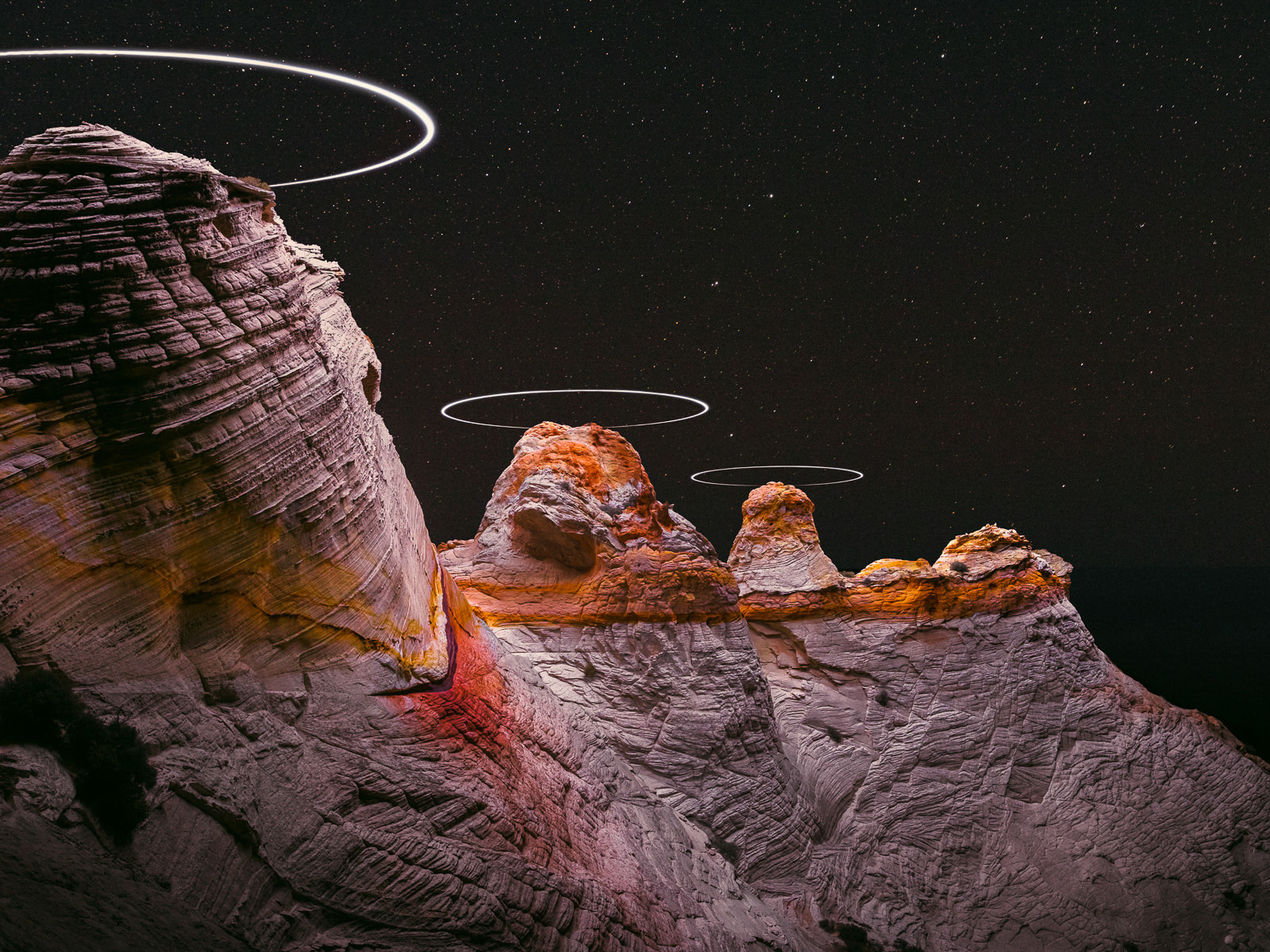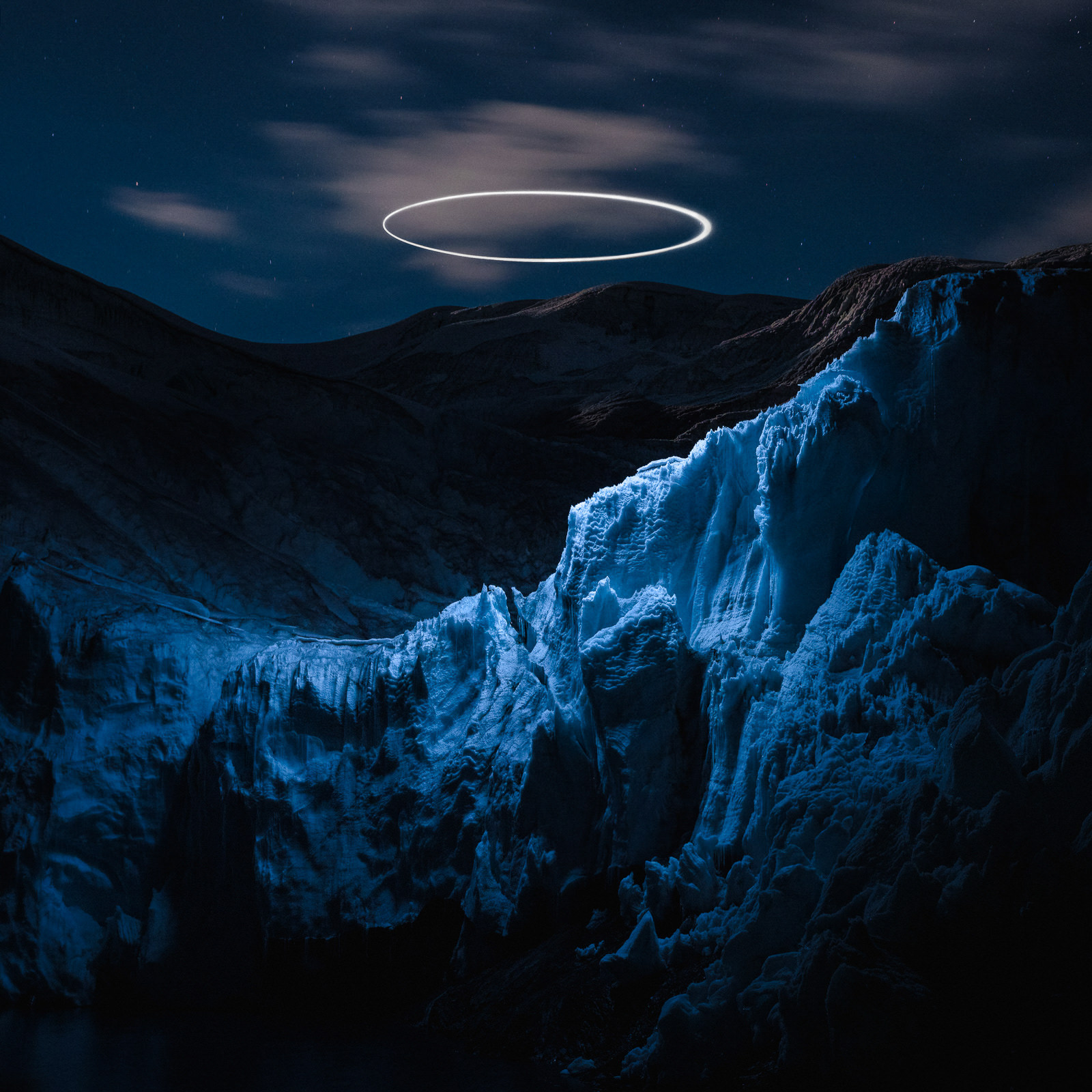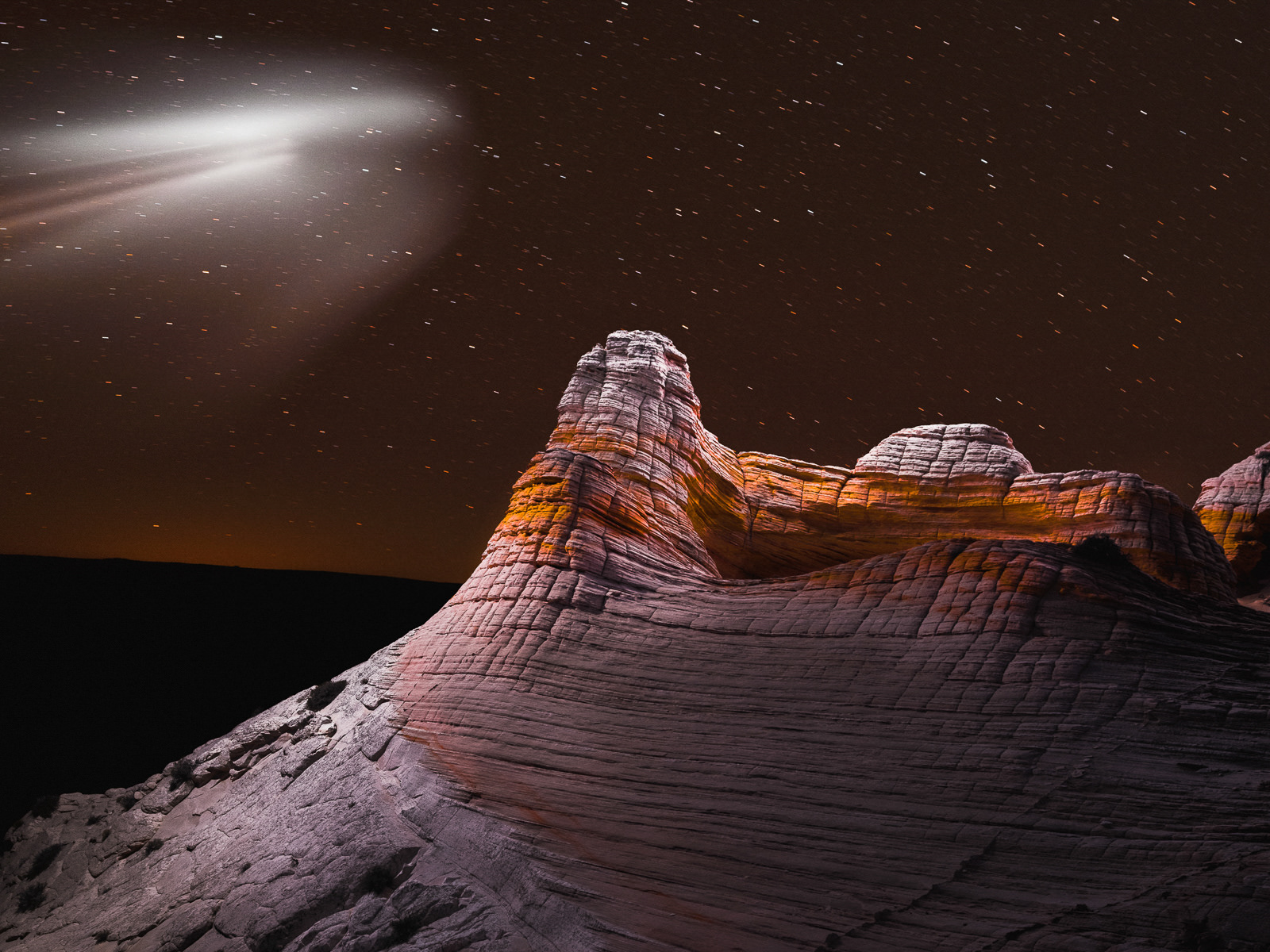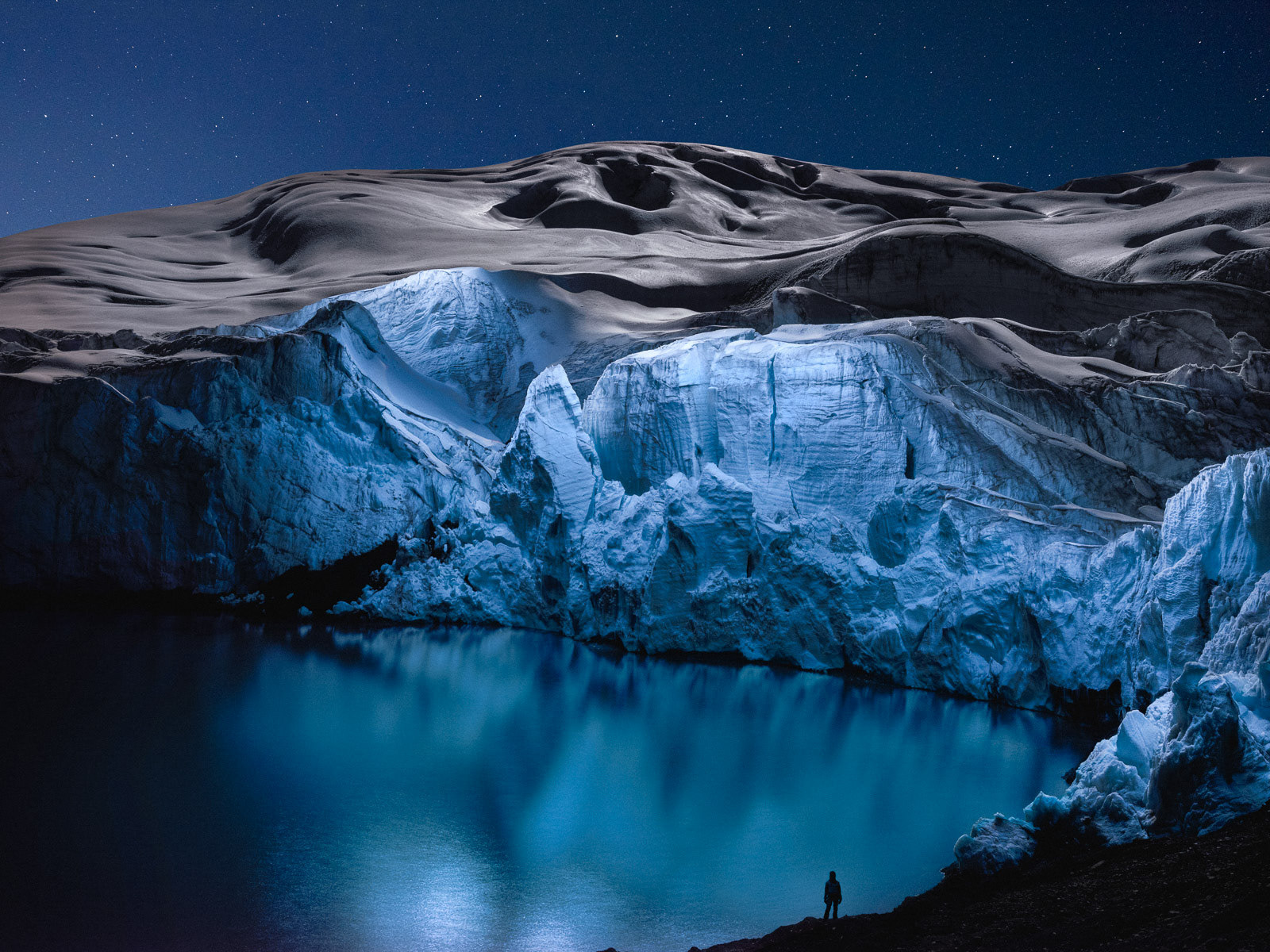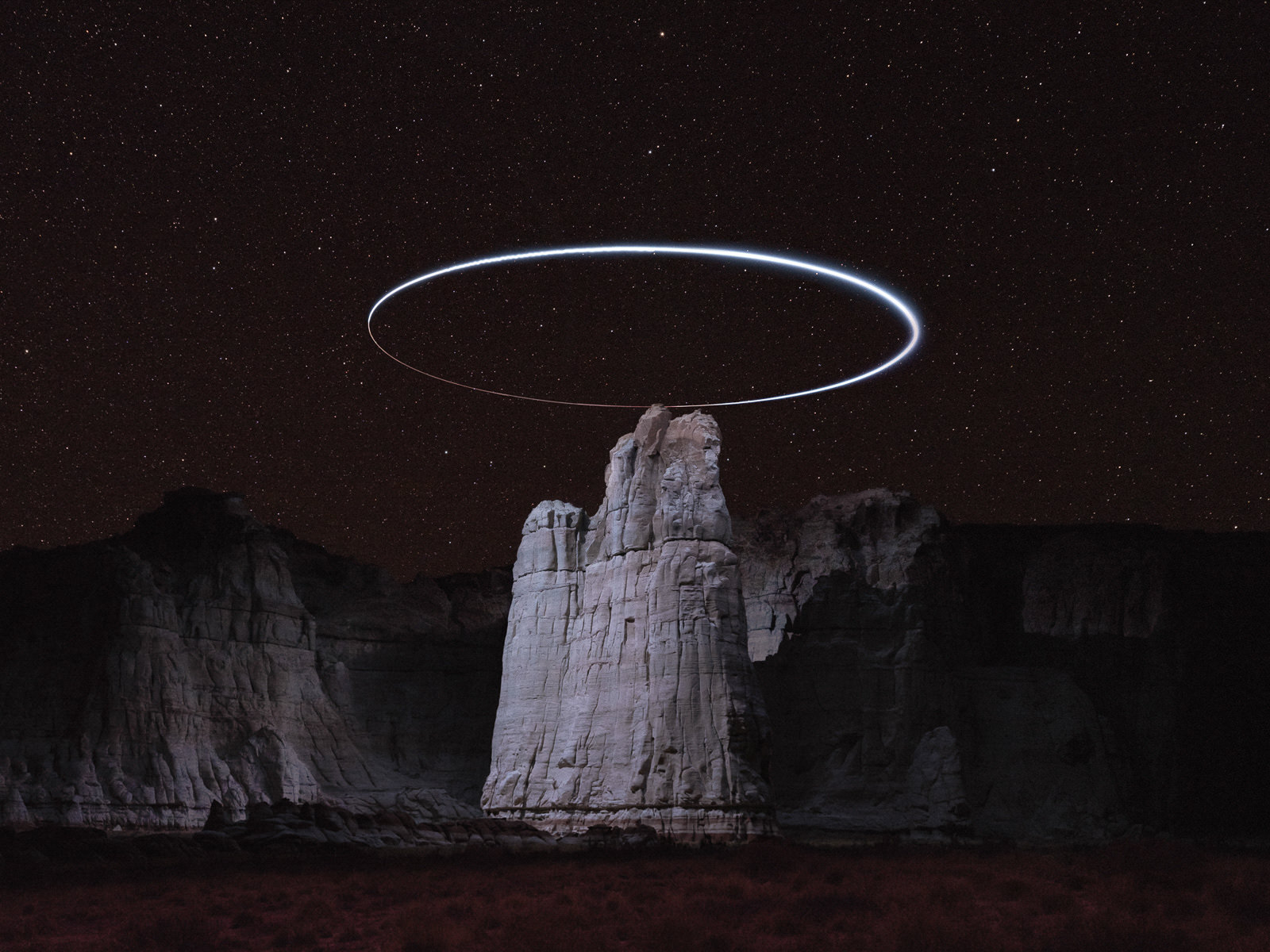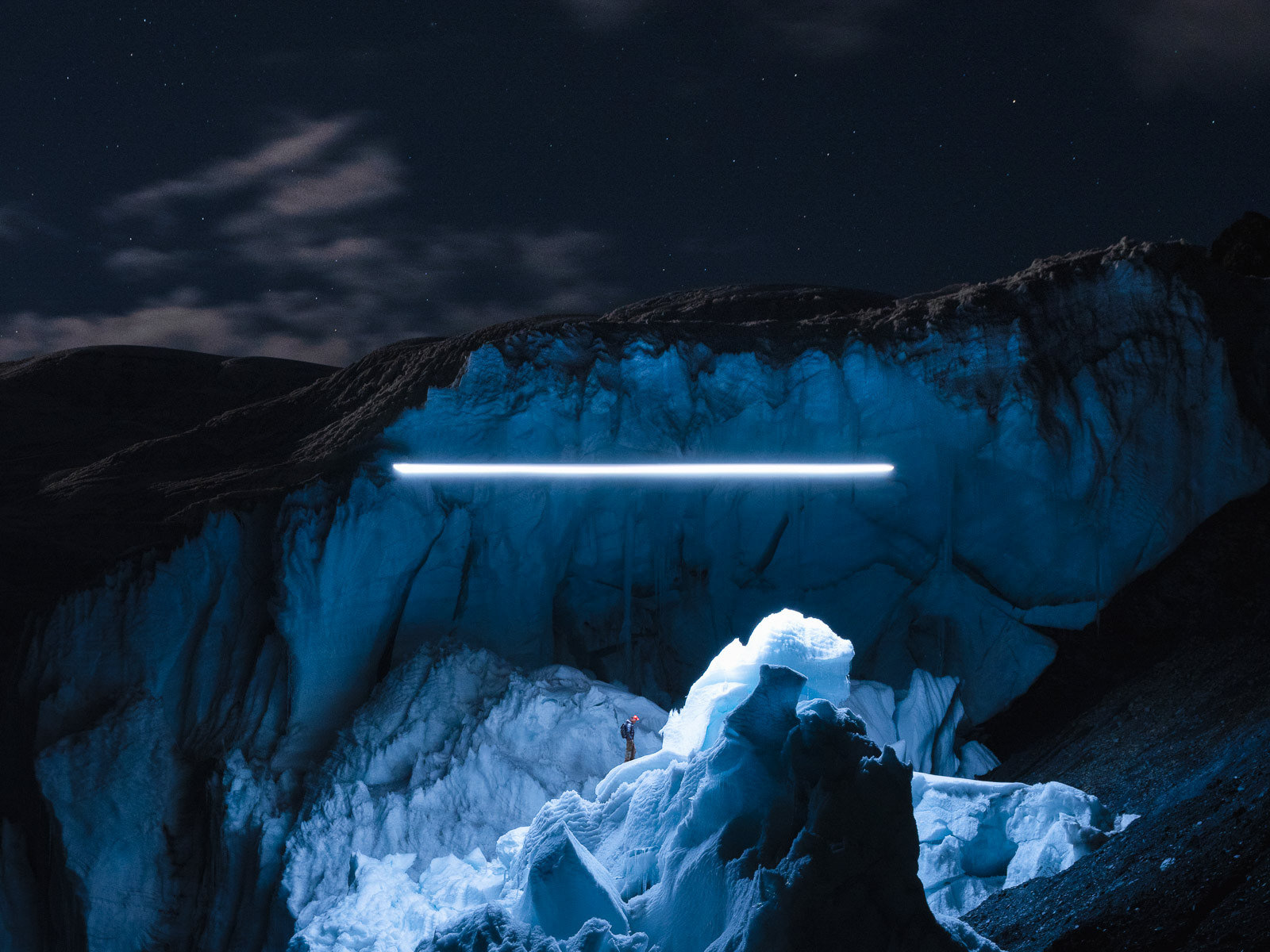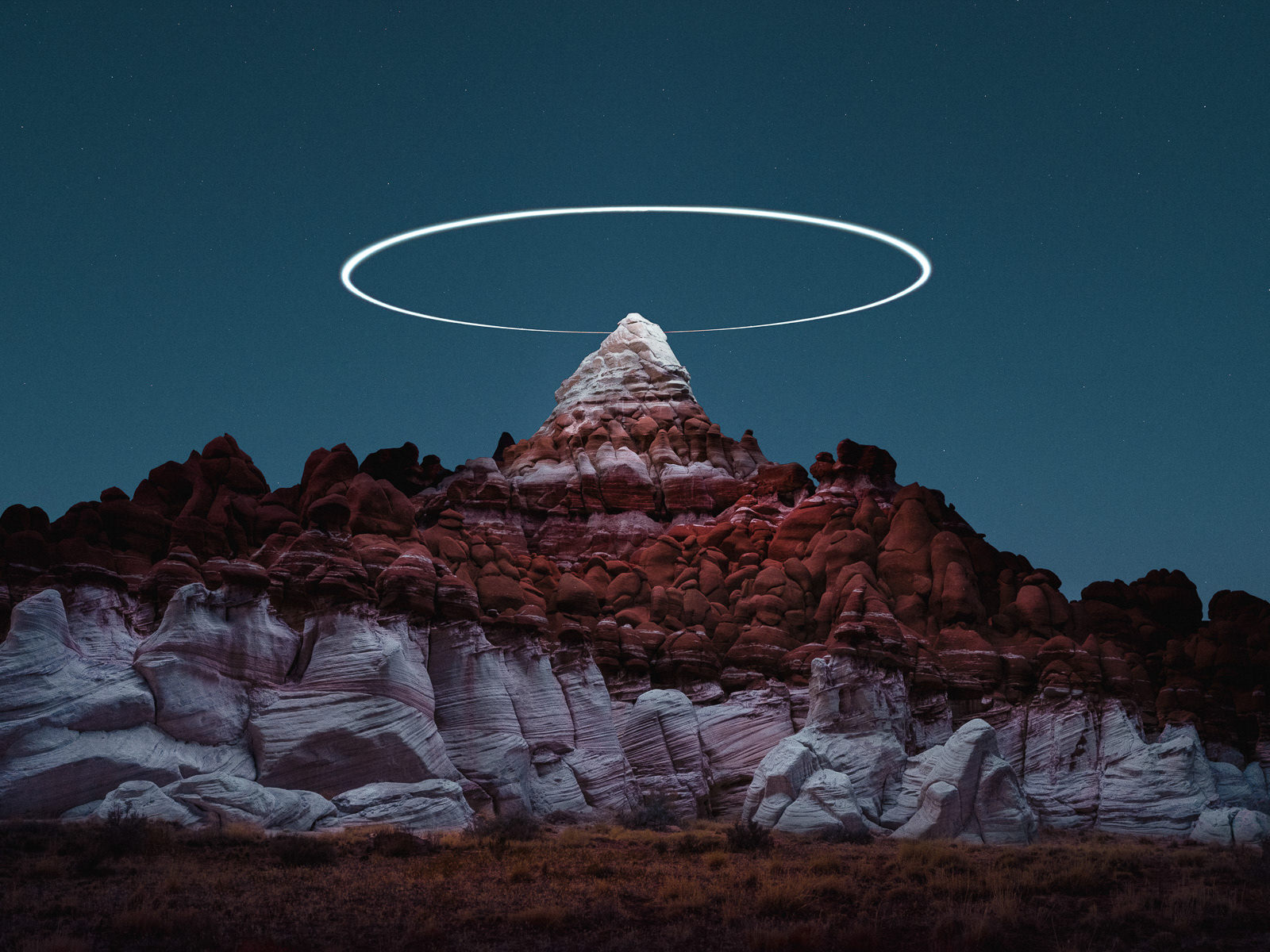
Not Your Typical Drone Photography: Light Painting Landscapes with Reuben Wu
There’s no denying that aerial drone photography has become pretty popular over the last few years. Drones definitely give photographers new ways to portray different perspectives, but that can only be done so much before people start saying, “I’ve seen it a thousand times.”
Chicago-based photographer Reuben Wu has come up with a new way to use drones in photography. Instead of taking pictures from above, Reuben travels to remote locations to create high-flying, drone-illuminated images of the beautiful landscapes. Shot on land, these images tell stories of unknown places and often have a sci-fi film, we’re not alone, feel.
In our interview, Reuben tells us about his new project and book, Lux Noctis, and how he goes about shooting these creative landscape photos.
Can you tell us about your new series, Lux Noctis? How did you get started with this project?
I was first introduced to using drones by the conventional route of just buying a DJI Phantom and taking pictures and videos with it. I do a lot of night photography and long exposure stuff as well, so I was trying to figure out creative ways of using the drone. I knew that the drone wasn’t able to take pictures in low light like that, so I was experimenting with using projectors at night in the desert, projecting graphic patterns onto rock pinnacles and capturing that. The whole idea was kind of born out of experimentation. The first time that I used the light on a drone was actually when I was doing a test shoot for a car out in the desert. It was a way of picking out the landscape behind the car, and then it developed from there.
With landscape photography, it’s always kind of limited or bound by natural light and lovely sunsets and sunrises and natural phenomena. You have to wait and be patient for that to happen. And more often than not, the quality of light is not always perfect in terms of angle on landscapes. So I was looking to really control the lighting of the landscape as you would in a studio. I knew that being able to do that in a very remote environment would help. There’s a difference between doing that kind of thing in a desert environment and doing it in the city.
The idea was born out of that, plus it kind of gave me a sense of discovery and a sense of exploration with these landscapes. A lot of these places you’ve seen before in beautiful photographs and I think people get numb to seeing a lot of the same thing, which is a shame because these places are just incredible places that need to be preserved and appreciated and valued. So another part of the concept is also to reframe these places in a new light, casting them in an original and unfamiliar light which makes people feel a little bit more.
Drones are actually incredible in that you’re able to put a camera where you couldn’t put them in the past. But when I was doing aerial drone photography before, I felt like there was still something missing. Being able to use that technology to aid the work in a different way was something that I was really drawn to.
I now have a book. My book, Lux Noctis, has just been launched. We published 500 copies and there was a big pre-order for a few months. There are now probably not that many left. It’s beautiful. It’s a grey hardcover linen-bound book with gold lettering on the front. The publisher is Kris Graves Projects, an independent publisher based in New York.
That’s amazing. Congratulations. Are you going to print more?
I don’t know. It all depends. I might do if there’s interest, if there is demand for it. But I kind of like just doing a small run and just letting that exist for the time being. It’s available through the publisher’s website.
How did you get started in photography?
Photography came about by going on tour with my band (Ladytron), and we were doing a lot of touring over a 10-year period to a lot of different, interesting places. Music becomes kind of routine when you’re on tour, so it was a way for me to be creative and have a hobby while I was traveling. I just experimented more and more with different film, cameras, different lenses, different techniques and I became more involved in that as time went on. Then we took a break from the band in 2011 and I started doing visual art full-time.
What’s a typical shoot like for you? How do you find the locations that you’re shooting? And what’s your creative process like?
I do a lot of research in advance. I look at things like, what’s the closest city? What’s the closest airport? How do I get from the airport to the location? What does the location look like at different times of the year, different times of day? What’s the moon doing? What’s the sun doing? What are the textures and the morphology of the landscape?
I think this type of photography works very well with a certain type of landscape, where there’s a kind of monolithic element that is right out of the ground. I think it works very much in that way. But also, once I’m there, I do a lot of scouting on the ground.
I read something you said before, that you create high-production imagery using simple gear. What would you normally take with you?
Yes, the way I work is very compact and I can get out to these locations pretty easily as long as the drone is pretty small. It fits on my back. I usually just have the drone and the camera. I try and keep everything pretty simple because in a lot of these places I have to do a bit of scrambling using my two hands and feet to get places.
Do you have a favorite location that you’ve shot?
They’re all so different and they’re all really enjoyable. It’s a huge thrill when you’re doing it. It’s different for everyone because the constraints are always different for each location. One of the first ones that I did, I was flying a prototype live on a drone in the middle of winter in Utah. It was freezing cold and the place where I was shooting was half a mile away in the darkness and there was no moon. I couldn’t see where I was pointing the camera.
The only thing I could do was switch the light on the drone and just fly it out half a mile away. So it was kind of scary. What would happen if the drone fell? I was flying the drone across a canyon and if it had fallen, I would have lost the entire thing. As I was flying it, I gradually saw the landscape underneath me become illuminated because it was reaching the other side of the valley. That was pretty incredible seeing that actually happen in real time.
That’s not really something that is completely reflective in photography. Now, I’m experimenting with ways to show that experience in different ways. I’m looking at motion capture and motion versions of these photos and it actually works pretty well. It’s as if you see them being lit from the darkness and they’re made from stills; they’re very high resolution.
Where do you draw inspiration from? Are there other artists or photographers who have influenced your work?
I was influenced a lot by 19th-century romantic landscape painting. The way those painters were able to show reality the way they wanted to, to create their own reality rather than just show what was in front of them. That is the whole crux of the way I use photography – it’s about a vision that you share with people rather than something that everyone just sees. I feel like I am definitely inspired by how painters construct their own reality in their work.
Also, aspects of science and science fiction. Images that we have seen from NASA, the Mars Rover, or of other planets and concepts in science fiction and speculative fiction which still have a very strong aspect of reality and realness to them. There’s this other side of showing our planet in a way which is still quite hard edged and documentary.
It definitely has a science fiction aspect to it. Is that something that you’ve always been interested in?
I think so. There’s a certain type of science fiction film and story that I’m interested in and it’s not really the Star Wars type of thing. It’s more speculative where it’s not just far away in the galaxy somewhere, millions of years ago. This is happening now, everything is familiar but for one jarring thing which, I suppose, is a bit like magical realism. So it’s more like Close Encounters of the Third Kind.
What impact are you trying to make through your work? What do you hope people take away from your images?
I want people to be intrigued with the planet. I don’t see myself as an environmentalist; the environment is just what I portray. The main message is not about environmentalism, it’s about documenting. But I definitely want people to value what we have now more than ever.
I just recently shot some photographs in Peru at a glacier which is vanishing at a really shocking rate from climate change. Rather than trying to renew people’s vision of a place, it was more to do with preserving a memory of a place because this place is going to vanish in 10 years, which is really sad. I definitely felt like these pictures are going to be a memory for other people to look at, to see what was once there.
It is a form of documentary photography. How does, for example, your Aeroglyphs project play into that? What was the inspiration behind it?
Well, it’s kind of a spinoff of the Lux Noctis project. In Lux Noctis, I was experimenting with featuring the light paths of the drones and it made me start thinking about land art, movement and how I could do my own version of land art without being invasive to the landscape and without touching the landscape. I wanted to make something with light and I decided to evolve that rather than use it to light an interesting landscape underneath.
I focused on the light path itself and did it in a space which was clear of any obstructions but still allowed it to appear real. If I just did it in a space without any light cast onto any surface, then it would just look Photoshopped. It was important for it to look real and analog rather than digital.
What are you working on now?
The band. I’m pretty busy with the photography and video but we also have a new album coming out early next year. We have three shows in the UK starting next month. I’m going to be juggling activities.
I also have some commercial jobs that are coming up, but they’re still unconfirmed. Commercial jobs are a way for me to take my personal work to the next level. It’s a pretty great position to be in because I have clients who say, “We want you to do this thing that you did in your personal work and do it for us.” It allows me a lot of creativity and a lot of latitude to kind of elevate the work.
Yeah, you find that you have a lot of creative freedom in your commercial photography?
Yes, I do. I think there are a lot of examples where that doesn’t happen, but I think that there’s a new generation of agency and client creatives who have a similar vision of what the output of their company could be and how an artist’s personal work and commercial work can exist in the same world. I think that’s pretty cool.
Can you leave us with a favorite quote that always gets you pumped?
Rather than falling, night, to the watchful eye, rises.
